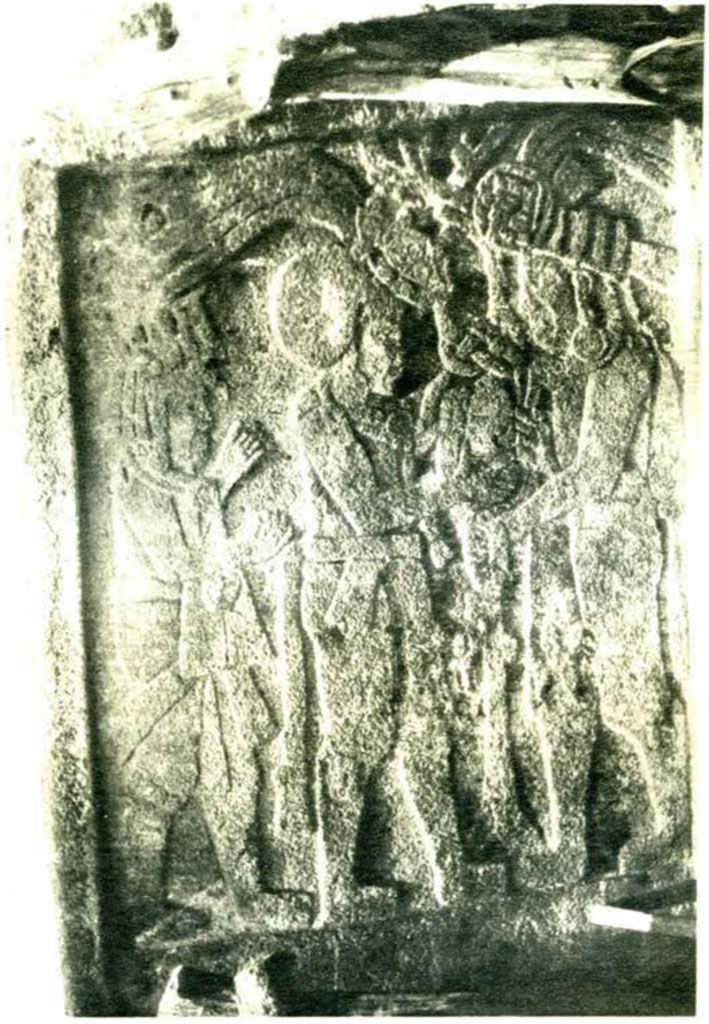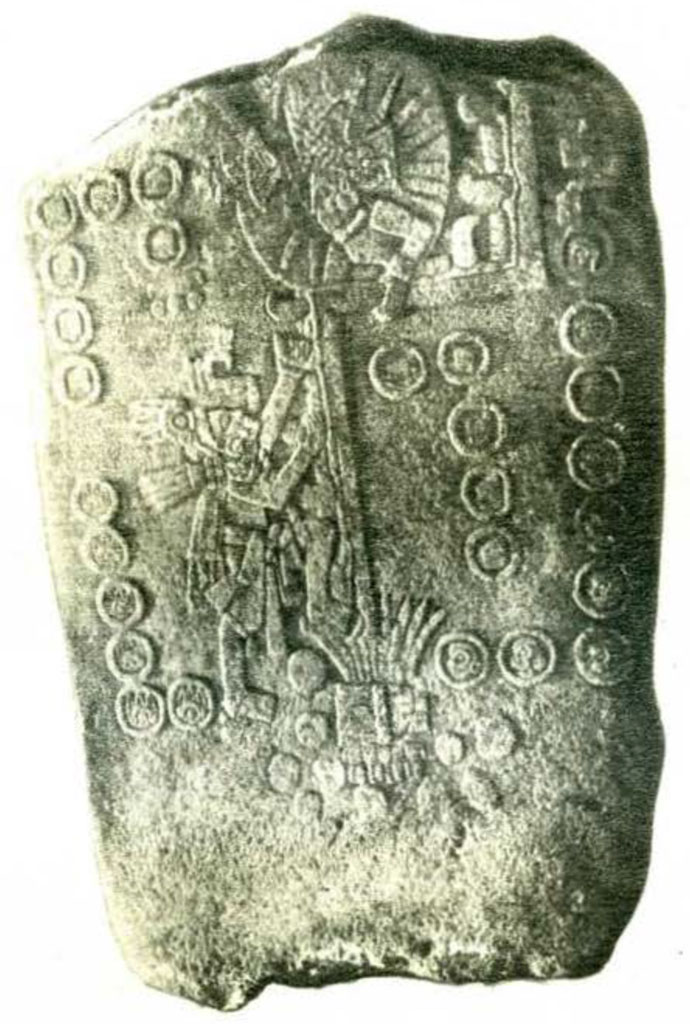
ONE of the most important and interesting results of Dr. Mason’s trip to Guatemala has been the investigation of a very large carved stone, the existence of which has long been known to archaeologists. Hitherto lying in a prostrate position, the stela-measuring about seven by eleven feet, eighteen to twenty inches thick, and weighing probably ten tons- was raised until it rested on edge, thus exposing not only the weather-worn upper face but also the opposite one. The latter, now examined for the first time, revealed a relief carving of great interest and in an excellent state of preservation.

The face of the stone that had long been uppermost shows three low relief figures in profile. Hardly enough is known of the culture of the ancient people of this region to permit a guess as to the purpose of the scene represented. In the center of the newly exposed face is seen a conventionalized representation of a plant which most resembles a maguey or else a maize plant or tree. At the left is a figure, evidently in the act of climbing the tree, and from the mouth extends a sign which doubtless represents speech or prayer. At the top of the stone is another figure with its left hand grasping the stem of the plant and with its head in the center of an irregular disk surrounded by rays, a feature that suggests that this figure may represent the Sun God. The whole combination suggests that it may represent that important ceremony which was held the day when the sun was in the zenith and when a perpendicular pole cast no shadow: a ceremony which in Mexico was known as the “Descent of the Sun God.”
The most important feature of the stela, however, lies in its wealth of hieroglyphic ornament. Thirty-eight glyphs are shown in five groups. The ten at the bottom are plain disks and may represent natural objects rather than glyphs. All but one of the remaining twenty-eight consist of signs within rings, and undoubtedly represent a system of counting and, presumably, of calendrical dating. Representation of dates by means of disks, circles, or dots from one to thirteen in number in combination with the pictorial glyph giving the name of the day was that employed by the ancient Aztecs or Nahuas, but the custom of placing the day-sign within a circle was seldom if ever used in Mexico, though used in the region under discussion. On the other hand, the use of a short bar with small dots was the system employed by the ancient Mayas. So far as Dr. Mason is aware, the Guatemala stela is the first known instance of the two systems being employed in the same inscription, and this discovery will doubtless throw considerable light on the question of the identity of the ancient peoples who carved the stone and on the interrelation of the Nahua and Maya cultures.

